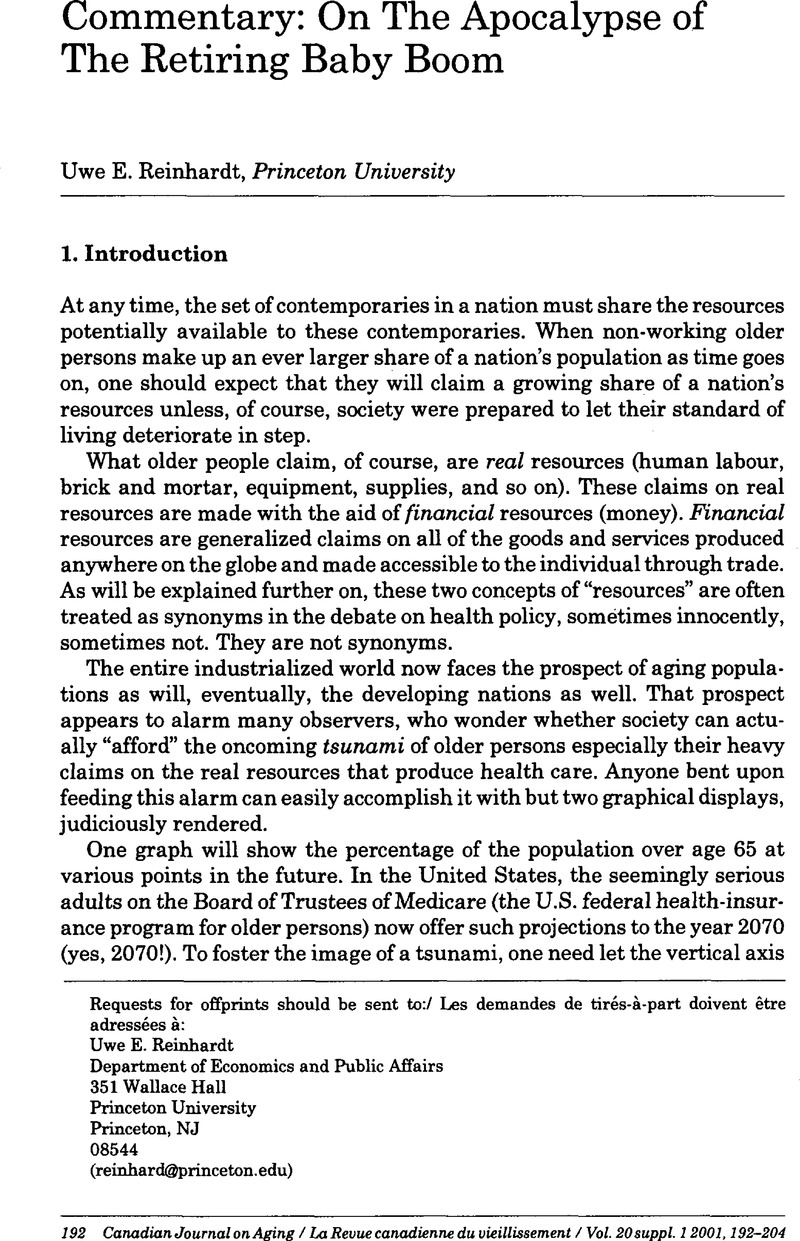Crossref Citations
This article has been cited by the following publications. This list is generated based on data provided by Crossref.
Hébert, Réjean
2002.
Research on Aging: Providing Evidence for Rescuing the Canadian Health Care System: (Brief submitted to the Commission on the Future of Health Care in Canada May 28, 2002).
Canadian Journal on Aging / La Revue canadienne du vieillissement,
Vol. 21,
Issue. 3,
p.
343.
Reinhardt, Uwe E.
2002.
Economic Policy for Aging Societies.
p.
235.
Hébert, Réjean
2002.
La recherche sur le vieillissement: un apport de données à la rescousse du système de santé canadien: (Mémoire présenté à la Commission sur l'avenir des soins de santé au Canada, le 28 mai 2002).
Canadian Journal on Aging / La Revue canadienne du vieillissement,
Vol. 21,
Issue. 3,
p.
337.
Shmueli, Amir
2021.
Social solidarity in healthcare: The Israeli case.
Social Science & Medicine,
Vol. 291,
Issue. ,
p.
114474.



